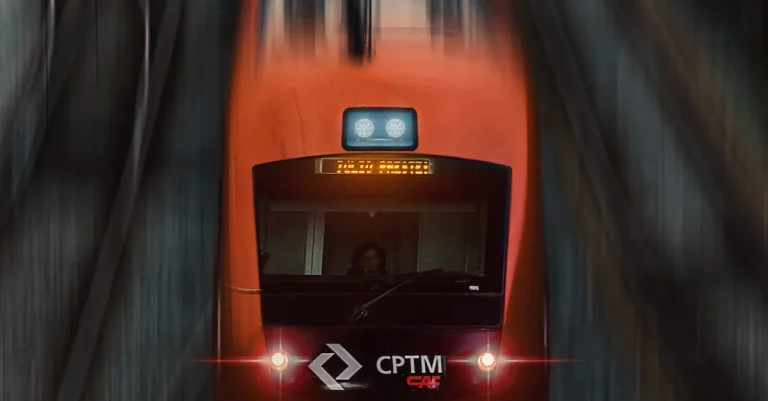The Complete Guide To Driving In Downtown Chicago
If you need to drive in downtown Chicago, you likely have questions about navigating this major metropolitan area. Is driving downtown stressful? What are the best routes? Where can I park? How do I avoid traffic? Here’s a quick answer: Driving downtown Chicago can be intense with many narrow streets, confusing intersections, and horrendous traffic, but planning optimal routes, using public transit, and knowing parking and traffic patterns can make it more manageable. In this comprehensive guide, we’ll provide tips on preparing for driving downtown, the best routes, parking, rush hour, navigation tools, avoiding traffic, and road etiquette to master downtown Chicago driving.
Preparing Your Vehicle
Before embarking on your journey through downtown Chicago, it’s important to ensure that your vehicle is in good condition. Taking a few minutes to inspect your car can help prevent any unexpected breakdowns or issues along the way.
Inspecting Your Car
Start by checking the tire pressure and tread depth. Properly inflated tires with sufficient tread will provide better traction and handling, especially on the busy streets of downtown Chicago. It’s also a good idea to inspect the windshield wipers and replace them if necessary, as unpredictable weather conditions can often occur in the city.
Additionally, make sure all your lights are working properly, including headlights, taillights, brake lights, and turn signals. This is not only important for your safety but also for the safety of other drivers on the road.
Don’t forget to check your fluid levels, including oil, coolant, and windshield washer fluid. It’s a good practice to keep extra fluids in your trunk, just in case you need to top up during your journey.
GPS/Navigation Tools
Driving in downtown Chicago can be a bit challenging, especially if you’re unfamiliar with the area. To help navigate through the city’s complex roadways and avoid getting lost, it’s highly recommended to have a reliable GPS or navigation system.
There are numerous GPS and navigation tools available, ranging from smartphone apps to dedicated devices. Choose one that suits your preferences and make sure to input your destination before starting your drive.
This will help you stay on track and find the most efficient routes to your desired locations.
Some popular GPS and navigation tools include Google Maps, Waze, and Garmin. These tools often provide real-time traffic updates, alternative route suggestions, and even information on nearby attractions and points of interest.
Maps
While GPS and navigation tools are incredibly helpful, it’s always a good idea to have a backup plan. Keep a physical map of downtown Chicago in your car, just in case technology fails you. Having a map can give you a broader perspective of the city’s layout and allow you to plan your routes more effectively.
There are various maps available, including city maps, road maps, and even tourist maps that highlight popular attractions. You can find these maps at gas stations, convenience stores, or online websites such as Maps of World.
Remember, being well-prepared and having a properly maintained vehicle will make your driving experience in downtown Chicago much smoother and stress-free. So take the time to inspect your car, utilize GPS or navigation tools, and keep a backup map handy.
Now you’re ready to hit the road and explore all that downtown Chicago has to offer!
Planning Your Route
When it comes to driving in downtown Chicago, planning your route is essential. The city can be busy and congested, especially during peak hours, so it’s important to choose the best route to your destination. Here are some tips to help you plan your route effectively:
Lake Shore Drive
Lake Shore Drive is one of the most scenic and popular routes in downtown Chicago. This iconic roadway runs along the eastern shore of Lake Michigan, offering breathtaking views of the city skyline and the lake. It’s a great option if you want to enjoy the beauty of Chicago while driving.
However, keep in mind that Lake Shore Drive can get crowded, especially during rush hour. Be prepared for slower traffic and plan your travel time accordingly.
Interstates
Interstates are the backbone of the Chicago transportation system, and they provide convenient access to downtown. The two main interstates that run through the city are I-90 (also known as the Kennedy Expressway) and I-94 (also known as the Dan Ryan Expressway).
These highways connect Chicago with the suburbs and neighboring states, making them ideal for longer trips. However, be aware that traffic on the interstates can be heavy, especially during peak travel times. Consider using alternative routes if you want to avoid congestion.
Avoiding Construction
Chicago is known for its constant road construction, and it’s important to stay updated on any ongoing projects that might affect your route. Check the city’s official website or use navigation apps that provide real-time traffic updates to stay informed.
If possible, plan your route to avoid construction zones or allow extra time for potential delays. Remember, it’s better to be cautious and prepared than to get stuck in traffic due to unforeseen roadwork.
By planning your route ahead of time and considering factors like traffic, construction, and scenic routes, you can navigate downtown Chicago with ease. Whether you choose to drive on Lake Shore Drive, the interstates, or opt for alternative routes, being prepared will help make your driving experience in downtown Chicago a smooth one.
Parking Downtown
When it comes to driving in downtown Chicago, one of the biggest challenges is finding a parking spot. With the bustling city streets and limited parking availability, it’s important to know your options before heading out. Here’s a complete guide to parking in downtown Chicago:
Garages & Lots
Garages and parking lots are a popular choice for those looking for convenient and secure parking in downtown Chicago. There are numerous garages and lots scattered throughout the city, offering a range of parking options for both short-term and long-term stays.
Some popular parking companies in Chicago include Millennium Garages and LAZ Parking. These facilities provide easy access to popular attractions and are often located near hotels, restaurants, and shopping areas.
It’s important to note that parking rates can vary depending on the location and time of day. On weekdays, parking rates tend to be higher during peak hours, while weekends and evenings may offer more affordable options.
Be sure to check the rates and hours of operation before parking in a garage or lot.
Meters & Zones
Another option for parking in downtown Chicago is utilizing street meters and parking zones. Metered parking is available on many city streets, allowing drivers to park for a limited amount of time by paying at the meter.
It’s important to note the parking restrictions and time limits posted on the meters to avoid any fines or penalties.
In addition to meters, there are also designated parking zones where drivers can park for a longer period of time. These zones are typically marked with signs indicating the time limit and any applicable fees.
It’s important to carefully read and adhere to the parking regulations in these zones to avoid any parking violations.
Parking Apps
Technology has made finding parking in downtown Chicago easier than ever before. There are several parking apps available that allow drivers to search for available parking spots, compare prices, and even reserve a spot in advance. Some popular parking apps include SpotHero and ParkWhiz.
These apps provide real-time information on parking availability, rates, and even offer discounts or promotions. They also provide directions to the parking facility and allow users to pay for parking directly through the app, eliminating the need for cash or credit cards.
Whether you choose to park in a garage, utilize street meters, or use a parking app, it’s important to plan ahead and be aware of the parking regulations in downtown Chicago. By familiarizing yourself with the options available, you can enjoy your time in the city without the stress of finding a parking spot.
Avoiding Traffic
Driving in downtown Chicago can be quite challenging, especially when it comes to navigating through heavy traffic. However, with some careful planning and the right strategies, you can avoid getting stuck in gridlock and make your way around the city more efficiently.
Rush Hour Times
One of the first steps in avoiding traffic in downtown Chicago is understanding the rush hour times. Rush hour typically occurs during the morning and evening commute times, with the busiest times being between 7:00 am to 9:00 am and 4:00 pm to 6:00 pm.
If possible, try to schedule your trips outside of these peak hours to minimize the chances of getting caught in heavy traffic.
Traffic Apps
Another useful tool for avoiding traffic in downtown Chicago is to use traffic apps. These apps provide real-time updates on traffic conditions, accidents, and road closures, allowing you to plan your route accordingly. Some popular traffic apps include Waze, Google Maps, and Apple Maps.
These apps not only provide you with the quickest route but also offer alternative routes to bypass congested areas.
Pro Tip: Check the traffic apps before you leave and consider using a phone mount or a hands-free device to ensure your safety while driving.
Public Transportation
One of the most effective ways to avoid traffic in downtown Chicago is to utilize the city’s public transportation system. The Chicago Transit Authority (CTA) offers an extensive network of buses and trains that can take you to various parts of the city.
Not only is public transportation a convenient option, but it also helps reduce traffic congestion and carbon emissions.
If you’re visiting Chicago as a tourist, you can also take advantage of the hop-on, hop-off sightseeing buses that provide a convenient way to explore the city’s popular attractions without the hassle of driving and finding parking.
For more information on public transportation options and schedules, you can visit the official CTA website at www.transitchicago.com.
By avoiding rush hour times, utilizing traffic apps, and considering public transportation options, you can navigate downtown Chicago with ease and minimize the frustration of sitting in traffic. Remember to plan ahead, stay aware of your surroundings, and always prioritize safety on the road.
Driving Etiquette
Driving in downtown Chicago can be a challenging experience, but by following proper driving etiquette, you can navigate the busy streets with ease and ensure the safety of both yourself and others. Here are some guidelines to keep in mind:
Pedestrians
Chicago is a city known for its bustling sidewalks, so it’s important to be mindful of pedestrians while driving downtown. Always yield to pedestrians in crosswalks and be cautious when making turns. Keep an eye out for pedestrians crossing between cars or darting out unexpectedly.
It’s also a good idea to avoid using your horn excessively, as it can startle pedestrians and create unnecessary tension on the road.
Cyclists
Chicago has a growing cycling community, and it’s essential to share the road safely with cyclists. Be aware of designated bike lanes and avoid driving or parking in them. When passing a cyclist, give them ample space, at least three feet, and use your turn signals to indicate your intentions.
Remember that cyclists have the same rights as drivers, so treat them with respect and patience.
CTA Trains
The Chicago Transit Authority (CTA) trains are a popular mode of transportation in the city. When driving near CTA tracks, pay attention to the signals and never attempt to beat a closing train gate. It’s also important to be aware of the “no turn on red” signs near CTA intersections, as this ensures the safety of pedestrians and passengers boarding or exiting the trains.
For more information on driving etiquette and rules specific to downtown Chicago, you can visit the Chicago Department of Transportation website. Remember, by practicing good driving etiquette, you can contribute to a safer and more efficient traffic flow in downtown Chicago.
Getting Your Bearings
Driving in downtown Chicago can be an exhilarating experience, but it can also be quite overwhelming if you’re not familiar with the area. Before you hit the road, it’s important to get your bearings and understand the layout of the city.
Here are a few key points to help you navigate the streets of downtown Chicago with ease.
Lake Michigan
One of the most distinctive features of downtown Chicago is its proximity to Lake Michigan. The lake is a great point of reference and can help you orient yourself while driving. If you find yourself heading east and see the sparkling blue waters of the lake, you’ll know that you’re going in the right direction.
Keep in mind that Lake Shore Drive runs parallel to the lake, making it a popular route for locals and tourists alike.
Chicago River
The Chicago River is another prominent landmark that can assist you in navigating downtown. The river runs through the heart of the city and is divided into three main branches: the North Branch, the South Branch, and the Main Stem.
Knowing which branch you’re near can help you determine your location and plan your route accordingly. The river is also flanked by several iconic bridges, which add to the charm of downtown Chicago.
Major Landmarks
Downtown Chicago is home to numerous major landmarks that can serve as helpful landmarks while driving. The Willis Tower, formerly known as the Sears Tower, is one of the most recognizable buildings in the city and can be seen from various vantage points.
Other notable landmarks include Millennium Park, Navy Pier, and the Magnificent Mile. These landmarks not only provide visual cues but also offer opportunities for exploration and entertainment.
It’s worth mentioning that downtown Chicago is known for its grid system, which makes navigation relatively straightforward. The city is divided into blocks, with each block measuring 100 feet in length.
The streets are numbered, with the north-south streets running parallel to Lake Michigan and the east-west streets converging at State Street. This grid system can be a useful tool when it comes to finding your way around downtown.
Before setting off on your journey through downtown Chicago, it’s a good idea to familiarize yourself with a reliable GPS or mapping app. These tools can help you navigate the busy streets, avoid traffic congestion, and find the best routes to your destination.
Remember to always stay alert, follow traffic rules, and be prepared for the unexpected when driving in downtown Chicago.
Conclusion
While driving in downtown Chicago can be challenging, being prepared by choosing efficient routes, knowing parking options, avoiding traffic, and maintaining proper etiquette will help you navigate downtown confidently. With some planning and defensive driving skills, you’ll better handle driving through the Windy City’s busy urban streets and intersections in no time.








